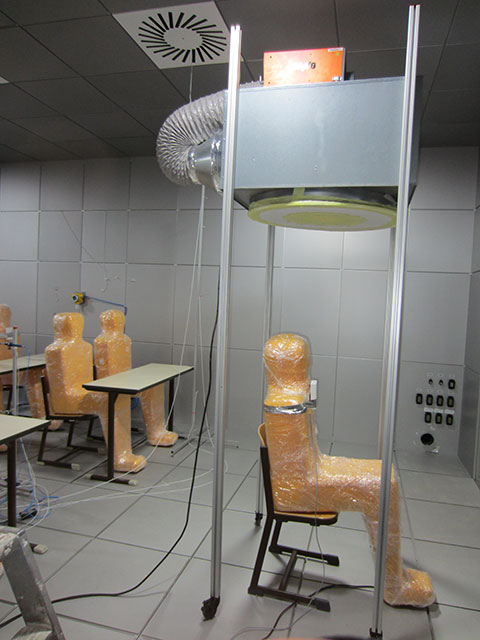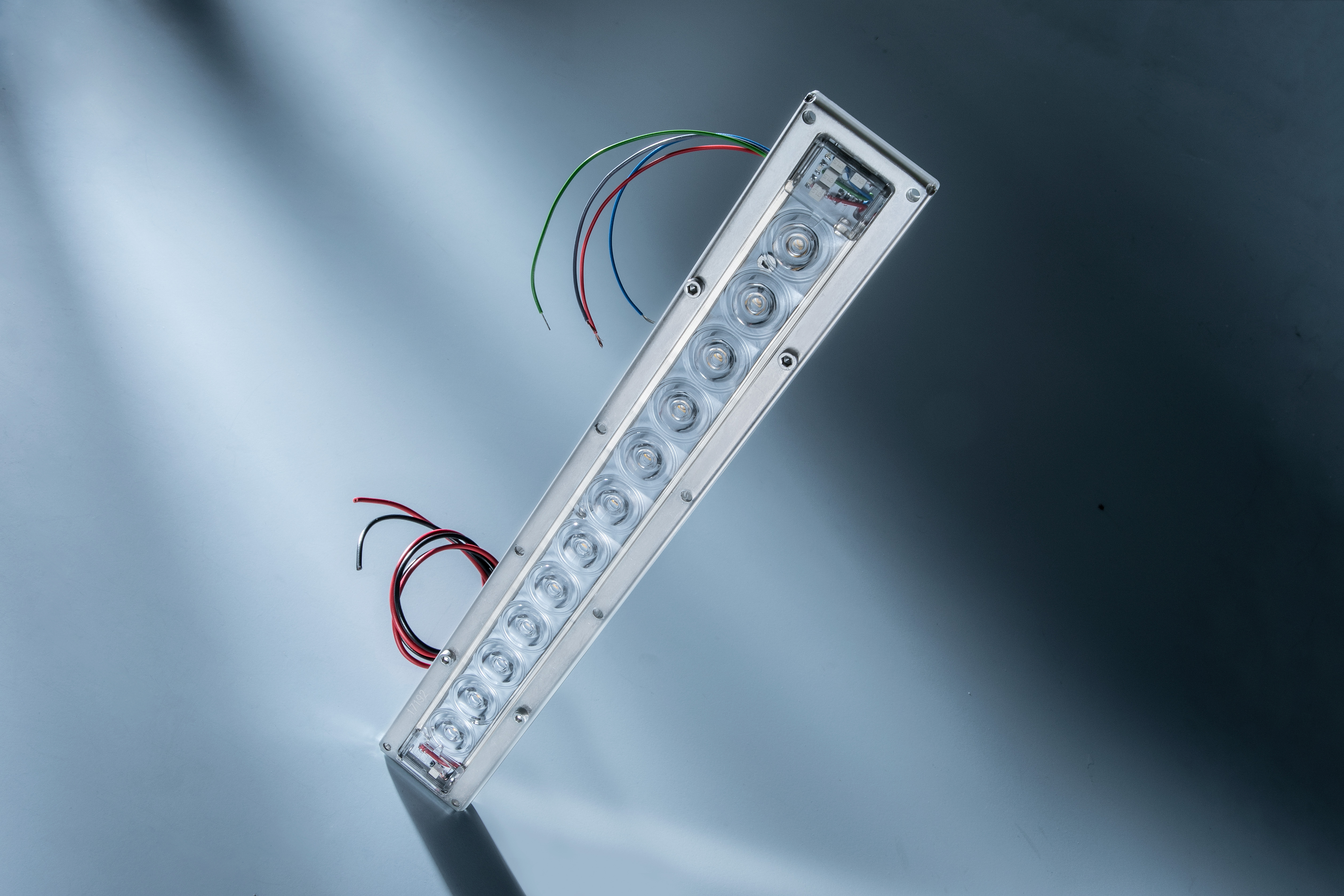The risk of contracting the coronavirus indoors or in a bus, train, car or plane is much higher than outdoors.



Fraunhofer IBP's Department of Energy Efficiency and Indoor Climate is finding ways to reduce the risk of infection by the coronavirus in these areas - such as by developing easy-to-implement retrofit solutions for inside buildings, by extending a simulation tool to include a model for the spread of airborne viruses, or by evaluating new types of systems, such as UV-C disinfection devices.
Retrofit solutions for indoors
The “protective canopy” developed by Fraunhofer IBP is one such easy-to-implement retrofit solution. All that is required is a standard 230 V socket; the system does not interfere with the existing technical building equipment. The indoor air is sucked in and cleaned of small particles and viruses by a HEPA filter. The purified air then flows like water from a shower head over the person to be protected. The flow rate is very low so does not cause any unpleasant draughts. The canopy is particularly suitable for situations involving large numbers of people, e.g. supermarket checkouts. This is because it protects against airborne particles that can flow past the Plexiglas screens which are currently used. The first development stage has already shown to reduce test particles the size of the coronavirus by between 50 and 63 percent.
Aerosol dispersion
Being able to assess the spread of potentially virus-laden aerosols in different indoor environments is a further important factor. The “Indoor Environment Simulation Suite (IESS)” developed by Fraunhofer IBP has been specifically extended with this in mind. The basis is a three-dimensional zonal simulation approach in which the entire room air is divided into between 100 and 1000 units of volume. An infected person can be portrayed as a source of viral particles. The virus concentrations emitted can be varied according to the respective activity, such as breathing, speaking or singing, as can also the type of respiratory protection, i.e. no mask, FFP2 mask or visor. How does an aerosol spread in a room depending on ventilation situation? With the models, different measures such as air purification or airing/ventilation can be compared with each other to assess their local effect on the indoor air.
How effective is UV-C disinfection?
The simulation allows the efficacy of cleaning devices to be evaluated, either as a characteristic curve or on the basis of performance measurements carried out at Fraunhofer IBP. UV-C disinfection was studied in detail. This technology can not only be used to treat aerosols in closed systems, but also to deactivate germs on surfaces in buildings, vehicle cabins and everyday objects. The functional proof of concept elaborated by the researchers opens up many new applications for compact UV-C LED systems. For instance: the system could be used to disinfect control panels that are touched by many people. Through optical simulations and measurement studies, Fraunhofer IBP offers component and equipment manufacturers fast and targeted assistance in developing and optimizing new solutions.